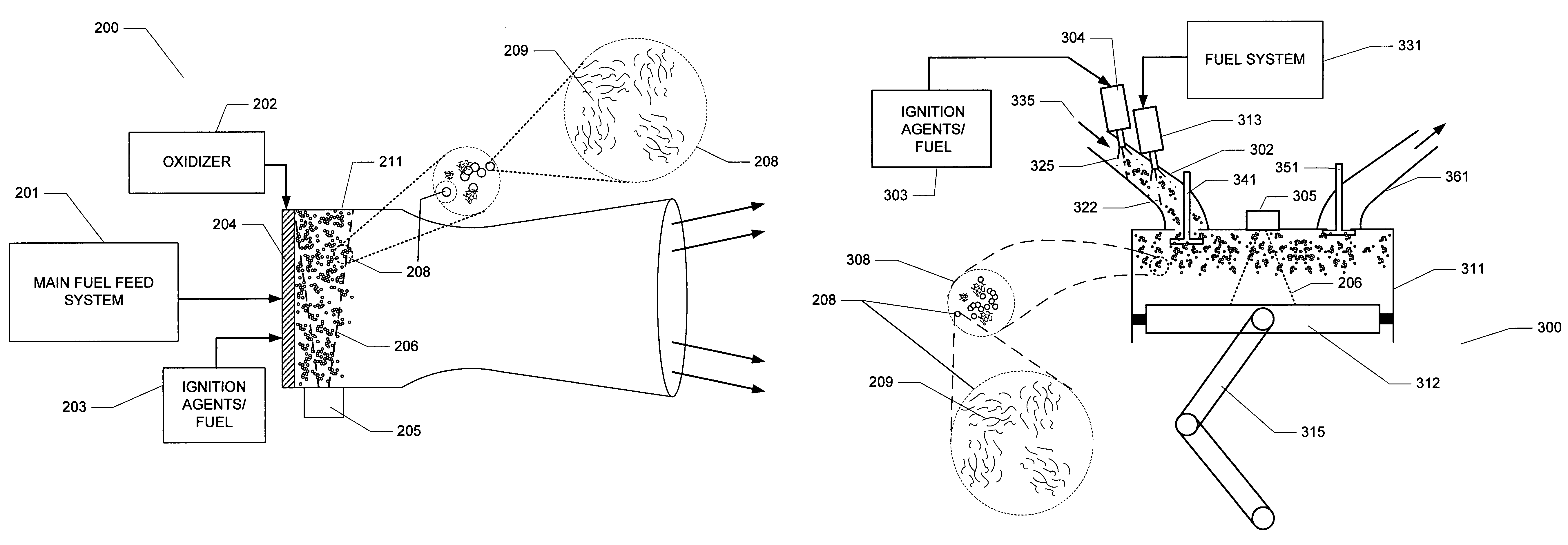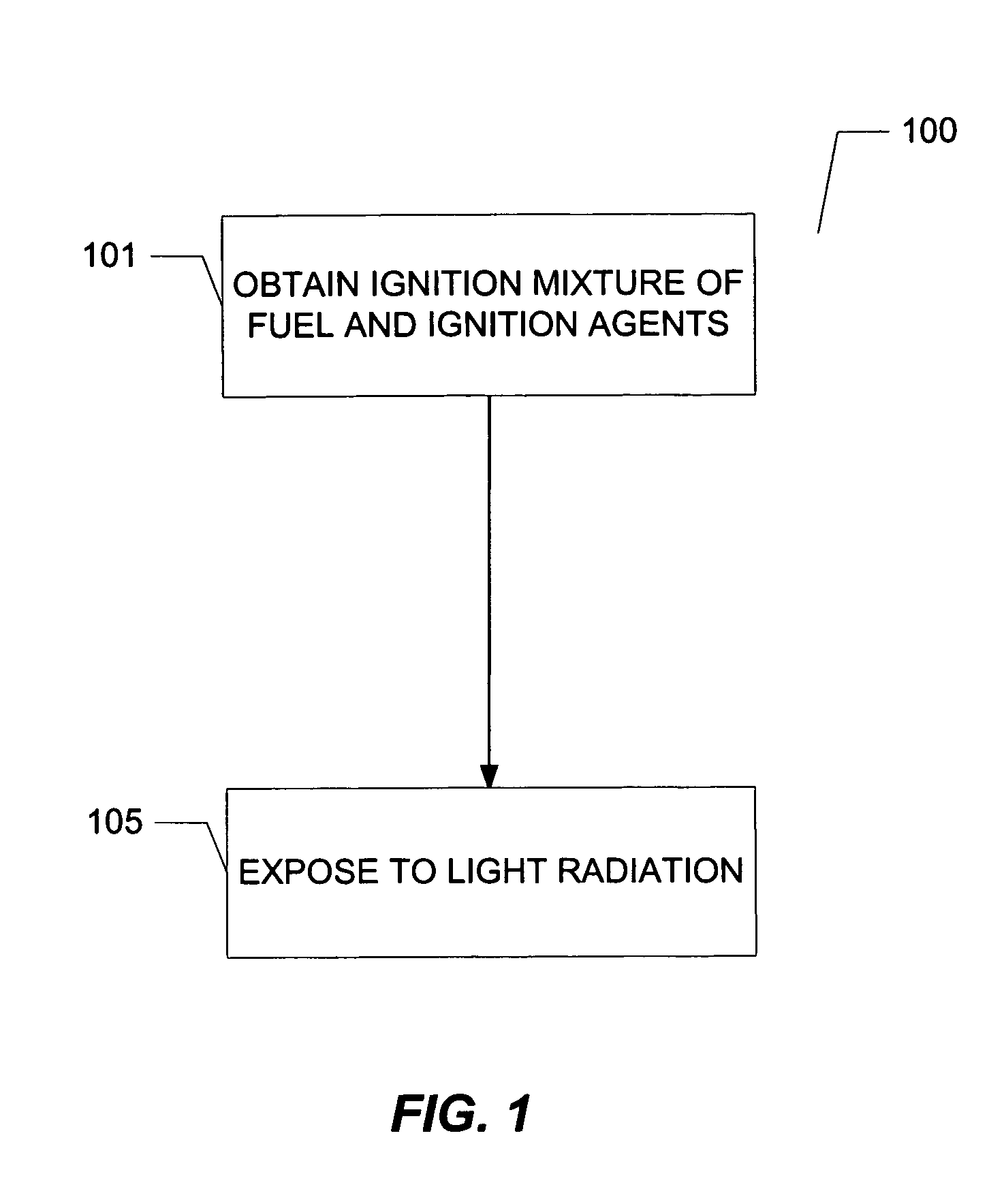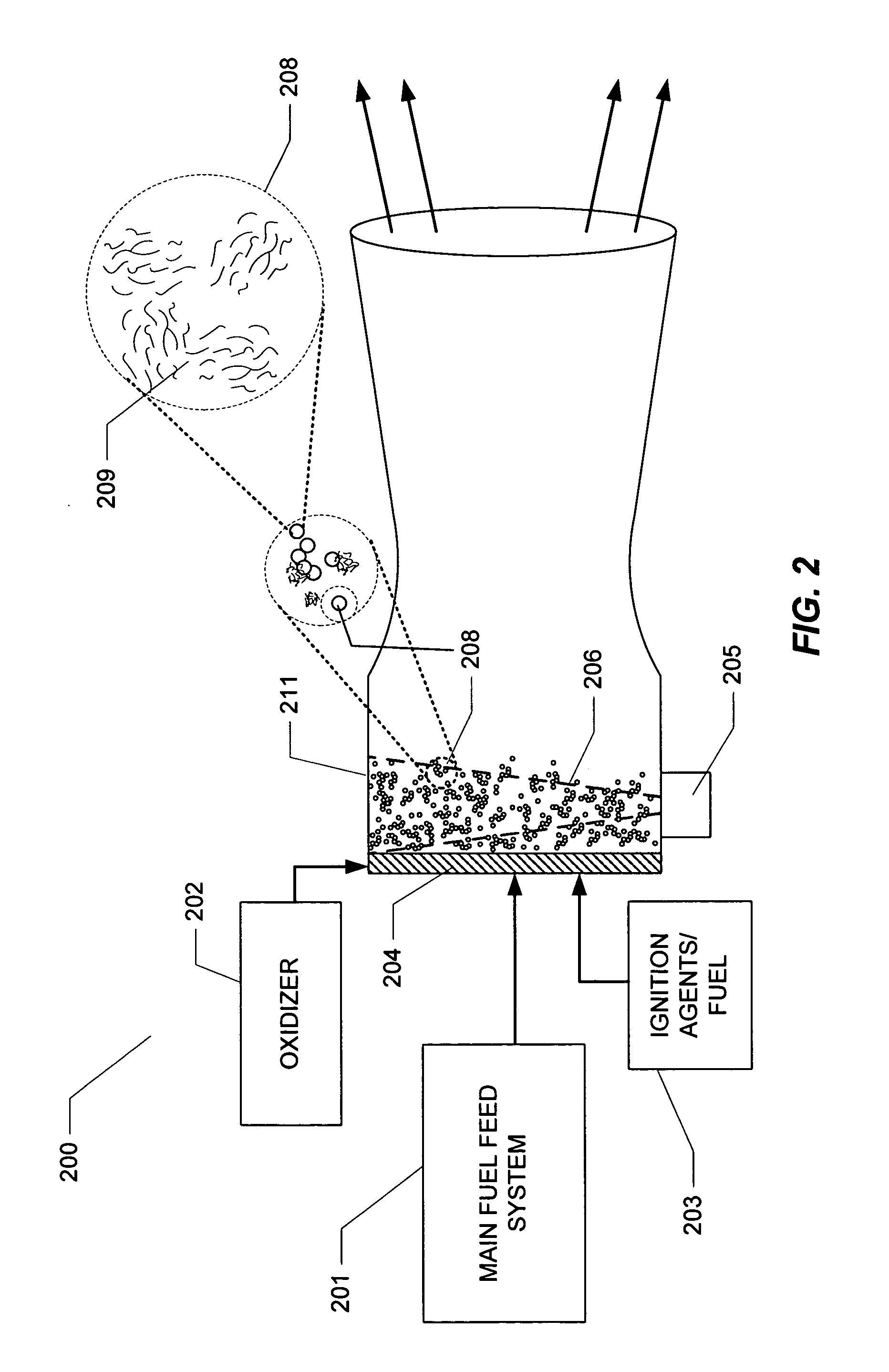Method for distributed ignition of fuels by light sources
a technology of distributed ignition and fuel, which is applied in the direction of burner ignition devices, lighting and heating apparatus, physical/chemical process catalysts, etc., can solve the problems of high cost, heavy weight, and high initial burn rate of fuel, and achieve the effects of high initial burn rate, and high initial burn ra
- Summary
- Abstract
- Description
- Claims
- Application Information
AI Technical Summary
Benefits of technology
Problems solved by technology
Method used
Image
Examples
example 1
RP-1 (Refined Petroleum) and SWCNTs Carrying Nano-Metallic Particles
[0060]2 milligrams of SWCNTs carrying nano-metallic particles were placed onto a microscope glass slide placed on a lab jack situated 20 mm directly under a camera flash-light unit. The air above the sample of SWCNTs was enriched with O2 using a Teflon tubing (¼″ O.D.) that had the gas flowing at 500 sccm (standard cubic centimeter per minute). The tube ending was typically 3-4 cm from the ignition mixture. 1-2 drops (0.1-0.2 ml) of RP-1 were added to the SWCNTs carrying nano-metallic particles using a Pasteur pipette. The sample was subjected to a single flash exposure and the ensuing event recorded using a color CCD video camera. When the flash unit window was at distances greater than 10 mm from the glass slide, only a characteristic “pop” was audible. The SWCNTs absorb the luminous output of the flash and cause rapid heating within, followed by the release of this energy through a photo-acoustic pulse. The glass...
example 2
Acetone with SWCNT Carrying Nano-Metallic Particles
[0061]Based upon the observations in the experiments detailed above, it appeared that the optimum exposure distance range for the experiment conditions was 5-6 mm. When 1-2 drops (0.1-0.2 ml) of acetone are added to the ignition agents and subjected to a single flash exposure, a violent flame jet was observed. No such flames were observed with only acetone present. Mixtures of acetone and activated carbon instead of SWCNTs carrying nano-metallic particles failed to ignite under otherwise identical experimental conditions. Also, when these nano-metallic ignition agents were completely immersed in excess acetone, ignition was not possible.
example 3
Nitromethane with SWCNTs Carrying Nano-Metallic Particles
[0062]2 drops (0.2 ml) of nitromethane were added to 2 milligrams of SWCNTs carrying nano-metallic particles placed on a glass slide and subjected to a single flash exposure in the O2 enriched air conditions. Accompanying the characteristic photo-acoustic pulse was the formation of a vaporized nitromethane cloud that then ignited into a bright-blue flame. On removal of O2, ignition was not possible but the nitromethane cloud was consistently seen after every flash exposure. The extent of vaporization was deduced to increase with reduction in the exposure distance and increase in the flash output.
PUM
| Property | Measurement | Unit |
|---|---|---|
| distance | aaaaa | aaaaa |
| distances | aaaaa | aaaaa |
| distance | aaaaa | aaaaa |
Abstract
Description
Claims
Application Information
 Login to View More
Login to View More - R&D
- Intellectual Property
- Life Sciences
- Materials
- Tech Scout
- Unparalleled Data Quality
- Higher Quality Content
- 60% Fewer Hallucinations
Browse by: Latest US Patents, China's latest patents, Technical Efficacy Thesaurus, Application Domain, Technology Topic, Popular Technical Reports.
© 2025 PatSnap. All rights reserved.Legal|Privacy policy|Modern Slavery Act Transparency Statement|Sitemap|About US| Contact US: help@patsnap.com



